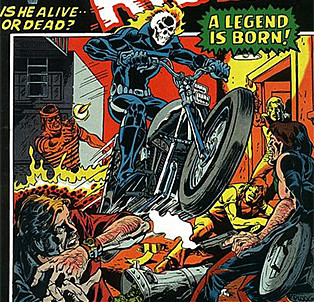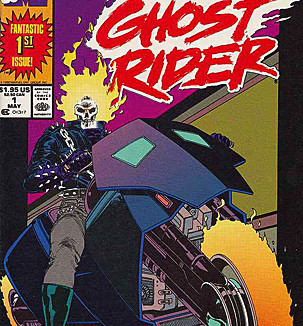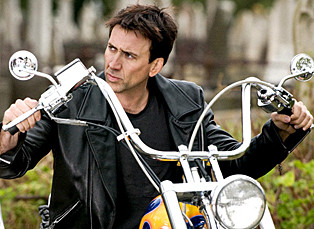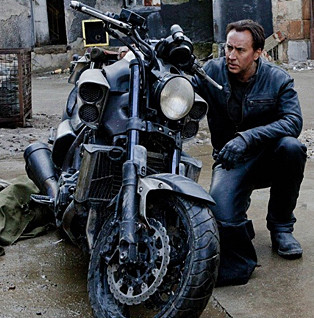Few images are as instantly captivating as a skeletal figure engulfed in flames, roaring down the highway on a hellfire motorcycle. This is the Ghost Rider, a character that has revved his way into popular culture, embodying the spirit of vengeance on two wheels. From comic books to blockbuster movies and video games, the Ghost Rider has fascinated audiences with his unique blend of supernatural horror and biker aesthetics. But what is it about this demonic biker that continues to ignite our imaginations? Let’s delve into the history of the Ghost Rider Biker, exploring his evolution, cultural impact, and the essence that makes him more than just a cool design on a t-shirt.
The saga of the Ghost Rider biker began in the 1970s, an era that celebrated both daredevil motorcycle stunts and the chilling allure of horror comics. Johnny Blaze, a motorcycle stunt rider, became the first modern Ghost Rider. His origin story is steeped in classic Faustian themes: a deal with the devil to save his foster father, Crash Simpson. This pact bound Blaze to the demon Zarathos, transforming him into the Ghost Rider at night, a flaming skull-headed entity riding a motorcycle wreathed in hellfire. This iteration perfectly captured the zeitgeist, merging the thrill of Evel Knievel-esque motorcycle stunts with the dark, supernatural undercurrents prevalent in horror media of the time. The visual of a stunt rider becoming a demonic avenger on a motorcycle was instantly iconic.
 1970s Ghost Rider comic book art showcasing the original demonic biker character Johnny Blaze.
1970s Ghost Rider comic book art showcasing the original demonic biker character Johnny Blaze.
However, the mantle of the Ghost Rider biker wasn’t exclusive to Johnny Blaze. The 1990s saw the rise of Danny Ketch, a new Ghost Rider who emerged as a Brooklyn vigilante. This version resonated with the darker, anti-hero trends of the era, fitting seamlessly alongside characters like Punisher and Wolverine. Ketch’s Ghost Rider was distinct, with a different demonic entity and a motorcycle that transformed in a more overtly technological and aggressive style, reflecting the evolving biker culture and comic book aesthetics of the decade. While Blaze’s Ghost Rider was rooted in a classic, almost gothic horror, Ketch’s was more contemporary, urban, and action-oriented, showing the versatility of the Ghost Rider biker concept. Both versions, however, firmly cemented the motorcycle as an integral part of the Ghost Rider identity.
 Ghost Rider in the 1990s, Danny Ketch version, highlighting the more modern biker aesthetic.
Ghost Rider in the 1990s, Danny Ketch version, highlighting the more modern biker aesthetic.
The Ghost Rider biker has also blazed a trail into other media, most notably in film. Nicolas Cage’s portrayal of Johnny Blaze in the Ghost Rider movies brought the flaming skull to the big screen. While the movies received mixed reviews, they undeniably amplified the character’s mainstream recognition. The trailer for Ghost Rider: Spirit of Vengeance showcased the sheer spectacle of a demonic biker in action, emphasizing the over-the-top, grindhouse style that the directors were aiming for. Even if critical reception wasn’t always glowing, these films visually translated the Ghost Rider biker to a wider audience, embedding the image of a flaming-headed rider into the minds of moviegoers. Beyond movies, the Ghost Rider biker has also appeared in video games, such as Ultimate Marvel vs. Capcom 3, further cementing his status as a recognizable and playable icon in popular culture.
 Nicolas Cage as Johnny Blaze in the Ghost Rider movie, embodying the live-action ghost rider biker.
Nicolas Cage as Johnny Blaze in the Ghost Rider movie, embodying the live-action ghost rider biker.
 Ghost Rider Spirit of Vengeance movie poster showcasing the fiery demonic biker in action.
Ghost Rider Spirit of Vengeance movie poster showcasing the fiery demonic biker in action.
But beyond the visual spectacle and thrilling action, the Ghost Rider biker embodies deeper themes. The “Spirit of Vengeance” moniker itself speaks to a core concept: retribution and justice, albeit often from a supernatural and morally grey perspective. The flaming skull and hellfire motorcycle aren’t just for show; they are potent symbols. The flames represent hellfire and punishment, while the motorcycle signifies speed, rebellion, and the open road – classic biker motifs. The Ghost Rider, at his core, taps into archetypal figures of folklore and mythology: the avenging spirit, the deal with the devil, and the lone rider dispensing justice. This thematic richness, coupled with the striking visual of a demonic biker, is what elevates Ghost Rider beyond a mere comic book character and into a lasting cultural icon.
In conclusion, the Ghost Rider biker is more than just a visually arresting concept. He is a character deeply rooted in cultural trends, evolving from the stunt biker craze of the 70s to the darker anti-heroes of the 90s and beyond. Whether it’s Johnny Blaze or Danny Ketch, or any other incarnation, the essence of the Ghost Rider biker remains consistent: a fusion of supernatural power, a thirst for vengeance, and the undeniable cool factor of a hellish motorcycle. His journey through comics, film, and games has solidified his place as a unique and enduring figure in popular culture, proving that the spirit of vengeance, especially when unleashed on two wheels, is a force that continues to resonate.
